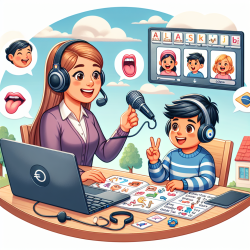Introduction
In the realm of speech-language pathology, ensuring the safety and well-being of children with food allergies is paramount. The research article "Precautionary Labelling of Foods for Allergen Content: Are We Ready for a Global Framework?" provides critical insights into the current state of allergen labelling and the potential benefits of a harmonized global approach. This blog aims to guide practitioners in enhancing their skills by implementing the research outcomes and encouraging further exploration into this essential topic.
The Current Landscape of Allergen Labelling
Food allergies are on the rise, and with them, the need for accurate and reliable allergen labelling. The research highlights the inconsistencies in allergen labelling regulations across different countries, which can lead to confusion and potential health risks for allergic consumers. The study emphasizes the importance of mandatory allergen labelling and the challenges posed by precautionary allergen labelling (PAL), which often lacks regulation and consistency.
Key Findings and Recommendations
The research outlines several key findings that practitioners should be aware of:
- Inconsistency in Labelling: There is a significant variation in how allergens are labelled across countries, which can confuse consumers and pose risks to allergic individuals.
- Need for a Global Framework: A harmonized global approach to allergen labelling could improve food safety and consumer confidence. The study advocates for international regulations that standardize labelling practices.
- Role of Legislation: Legislation plays a crucial role in ensuring consistent and reliable allergen labelling. The research suggests that countries with stringent labelling laws, such as Japan, provide a model for others to follow.
Practical Implications for Practitioners
Practitioners can enhance their skills and improve outcomes for children with allergies by considering the following actions:
- Stay Informed: Keep abreast of the latest research and developments in allergen labelling. Understanding the global landscape can help practitioners provide better guidance to families.
- Advocate for Change: Encourage local and national policymakers to adopt a global framework for allergen labelling. Practitioners can play a vital role in advocating for policies that protect allergic individuals.
- Educate Families: Educate families about the importance of reading labels and understanding the potential risks of cross-contamination. Empower them with the knowledge to make informed food choices.
Encouraging Further Research
While the research provides valuable insights, there is still much to learn about the impact of allergen labelling on consumer behavior and health outcomes. Practitioners are encouraged to engage in further research to explore these areas and contribute to the body of knowledge that can inform future policies and practices.
Conclusion
Implementing a global framework for allergen labelling is a critical step toward improving food safety and outcomes for children with allergies. By staying informed, advocating for change, and educating families, practitioners can enhance their skills and make a meaningful impact. To delve deeper into the research, I encourage you to read the original paper: Precautionary labelling of foods for allergen content: are we ready for a global framework?










